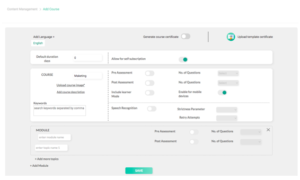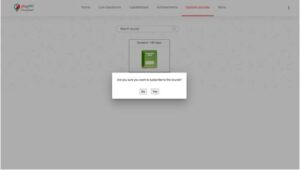An online and corporate training platform should always offer the option to pick a learning methodology — best-suited to meet your employees’ needs. The requirements may include the learning style, individual interests, and personal schedules. Yes, with the constant evolution of technology, the need for on-demand online training has also sky-rocketed. The modern generation is so accustomed to accessing information at their fingertips that it has dramatically altered their expectations of digital learning. In fact, remote trainees prefer to have control of their own learning, in contrast to traditional classroom structures.
Now, with the help of a subscription-based LMS like Playablo, L&D teams have the option to distribute courses, based on which skills need to be acquired by a certain learner group. You can allocate training modules to your employees when you understand what knowledge they will need to complete a specific task. For this purpose, you have the option to pick auto-subscribing courses. However, here is the thing. As we already mentioned, the contemporary employee has his/her own individual interests. S/he prefers flexibility. S/he might want to acquire knowledge about something else — which is outside his/her domain. And this is where the option of self-subscribing courses on LMS comes in handy.
For instance, suppose you have an audience segment from the sales and marketing team. And you have developed a mandatory course, which provides learners with the tools and ideas to maximise individual and team sales. Now, certain participants from the group might want to have more clarity on the design aspect of your products — to better understand how to pitch the offering. Here, they can go for self-subscribing courses on LMS (Learning Management System) . Well, to give you a better idea of how this option is made possible with PlayAblo, here is a short, step-by-step guide.
How Does PlayAblo’s Self-Subscribing Courses on LMS Work?
When you create a course using Playablo ‘ UCM, you have the choice of deciding if you want it to be self-subscribed. The learner can then decide to opt for self-subscribing courses on LMS if s/he wants to acquire additional knowledge over the subjects that have already been assigned to him/her. For this purpose, you can simply click on ‘Allow for self subscription as shown below:

Now, when the course is self-subscribed, let’s see how it looks from the learner’s end. Your employee can just go to the ‘Explore courses’ tab and choose any module that they want to self-subscribe.

Once they self-subscribe, the course will automatically become available on their dashboard.

Well, did you see how effortless and simple the process is? If you want some more clarity on the same, you can just speak to our experts.
NOTE: This blog was originally published by Playablo.

